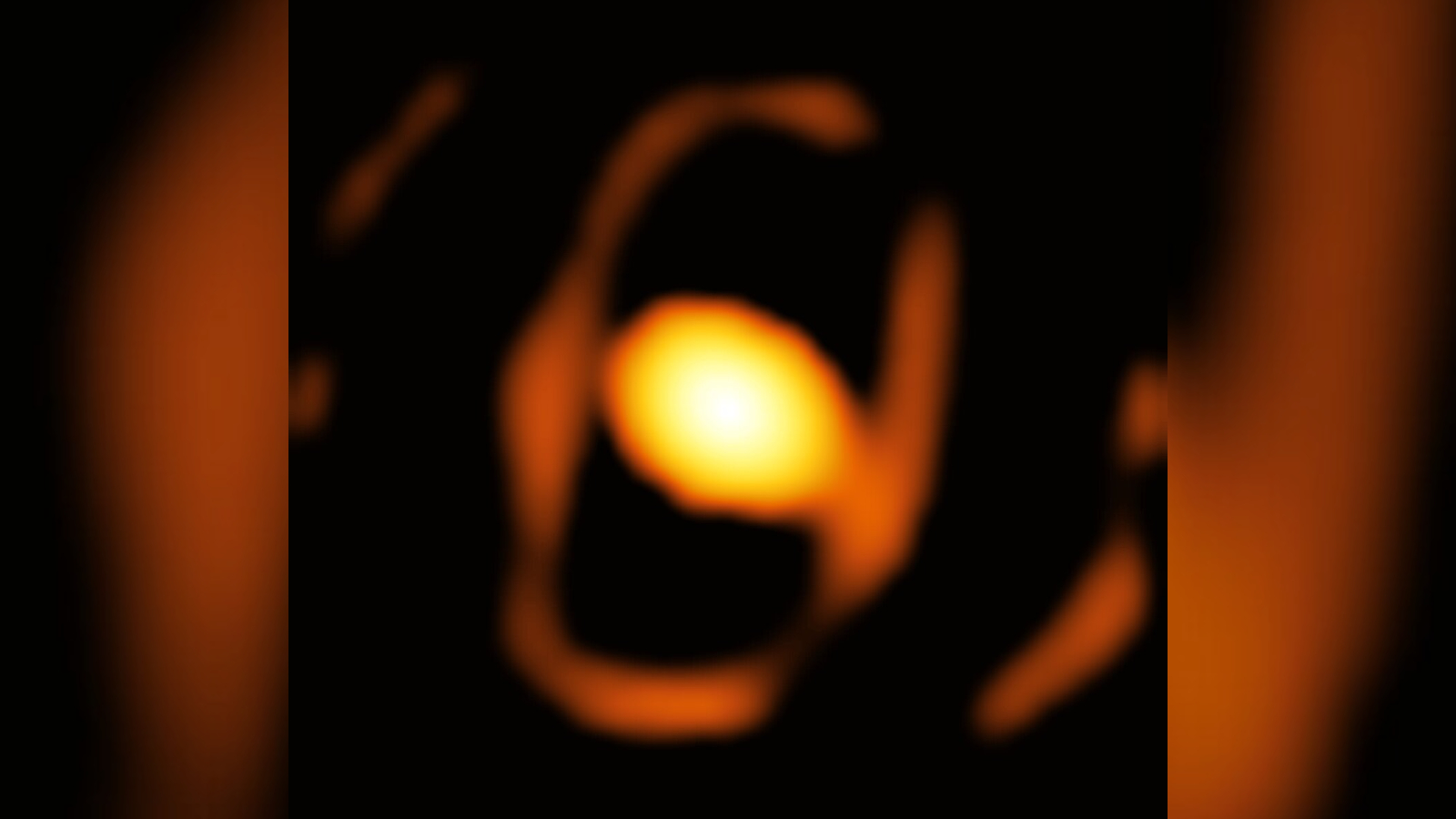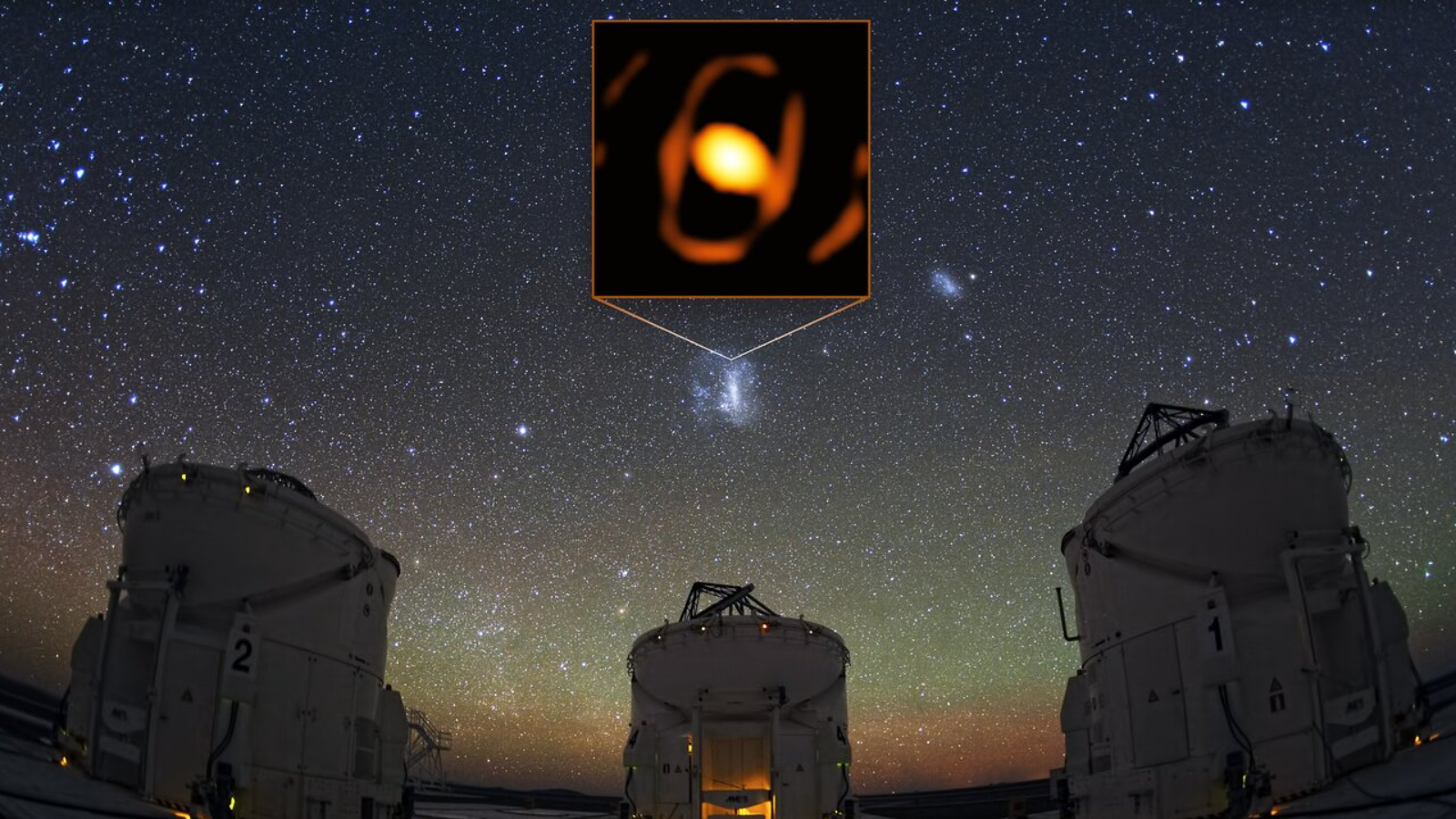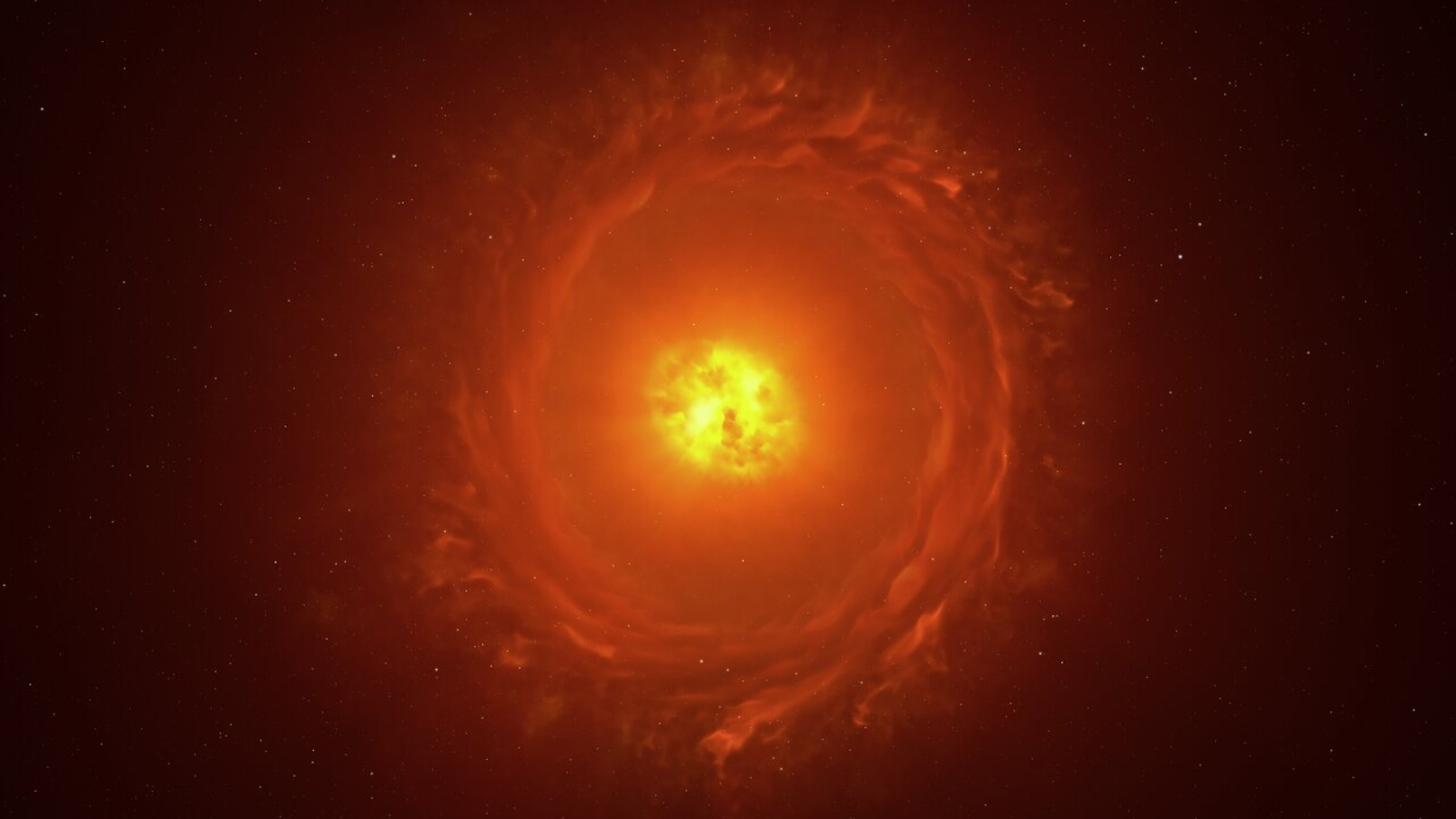'Behemoth star' captured in spectacular close-up image — and it's on the brink of exploding
Astronomers have taken a superdetailed, zoomed-in photo of the Large Magellanic Cloud's "behemoth star." The stunning image, which is the first of its kind from outside the Milky Way, shows that the giant star is right on the edge of going supernova.

For the first time, astronomers have taken a high-quality, zoomed-in photo of a star outside our galaxy — and it's right on the brink of exploding in a violent supernova.
The new close-up image, captured by the European Southern Observatory's (ESO) Very Large Telescope Interferometer (VLTI) in Chile, shows the red supergiant WOH G64, commonly known as the "behemoth star." It resides around 160,000 light-years from Earth, in the Large Magellanic Cloud — a satellite dwarf galaxy that orbits the Milky Way.
WOH G64 is around 1,500 times wider than the sun, making it one of the largest known stars in the universe. It is around 5 million years old, meaning it is near the end of its theoretical life span, which is much shorter than that of most stars because it burns through its fuel much faster. The new photo, which was released Nov. 21 as part of a study published in the journal Astronomy & Astrophysics, shows signs that it may soon meet an explosive end.
"We discovered an egg-shaped cocoon closely surrounding the star," study lead author Keiichi Ohnaka, an astrophysicist at the Andrés Bello National University in Chile, said in a statement. "We are excited because this may be related to the drastic ejection of material from the dying star before a supernova explosion."
"This star is one of the most extreme [giant stars] of its kind, and any drastic change may bring it closer to an explosive end," added study co-author Jacco van Loon, an astronomer at Keele University in the U.K. who has been observing WOH G64 since the 1990s.
Related: Could a supernova ever destroy Earth?

Until now, astronomers have captured only around two dozen equally detailed and magnified images of stars, and all of them have been located within the Milky Way. Resolving images of stars outside our galaxy has proved challenging because they are so far away. However, the VLTI could peer even farther into space using its GRAVITY instrument, which "combines light from different telescopes [that make up the VLTI] to allow astronomers to pick up minute details in faint objects," according to ESO.
Sign up for the Live Science daily newsletter now
Get the world’s most fascinating discoveries delivered straight to your inbox.
The new image also revealed that WOH G64 has dimmed significantly over the past 10 years. This is likely because of its egg-shaped cocoon, which is made from gas and dust shed from the star's outer layers during the past few thousand years, the researchers wrote.
The cocoon of stellar material was already known to scientists. However, the team was surprised by its shape, which is much more elongated than initial predictions suggested it would be.

The researchers proposed two possible reasons for the unusual shape: It could be due to how the material was shed off the star or because there is a smaller, previously unidentified star orbiting WOH G64 and stretching out its cocoon, Live Science's sister site Space.com reported. However, there is no other evidence for a partner star at this time.
If it doesn't explode first, the supergiant star will likely continue to dim over the next few years as more material is shed into its cocoon. As a result, it is unlikely that astronomers will capture such a clear image of the star again.
However, this single snapshot has offered an unparalleled glimpse at WOH G64, "providing us with a rare opportunity to witness a star's life in real time," study co-author Gerd Weigelt, an astronomer at the Max Planck Institute for Radio Astronomy in Germany, said in the statement.

Harry is a U.K.-based senior staff writer at Live Science. He studied marine biology at the University of Exeter before training to become a journalist. He covers a wide range of topics including space exploration, planetary science, space weather, climate change, animal behavior and paleontology. His recent work on the solar maximum won "best space submission" at the 2024 Aerospace Media Awards and was shortlisted in the "top scoop" category at the NCTJ Awards for Excellence in 2023. He also writes Live Science's weekly Earth from space series.









